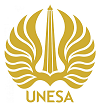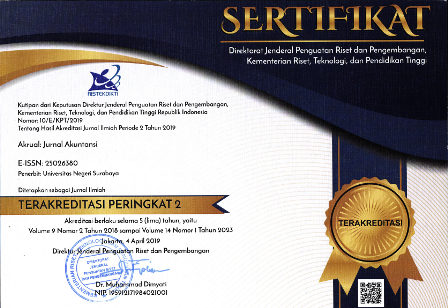Village Governance Strategy to Mitigate Deforestation for Sustainability.
DOI:
https://doi.org/10.26740/jaj.v15n2.p176-187Keywords:
Village Governance; Deforestation; PhenomenologyAbstract
Introduction/Main Objectives: The study aims to establish a village governance strategy prioritising sustainability and community welfare. Background Problems: The problem of deforestation due to economic reasons is a fundamental reason that looks simple but involves many components. The economic sector impacts culture, macro policies and politics, and the most considerable influence is environmental sustainability. So, significant intervention is needed through appropriate governance, namely based on innovative forest business. Apart from that, the touch of ICT aligns with efforts to increase smart tourism. Novelty: Smart forest tourism that pays attention to sustainability and community welfare. Research Methods: This study utilises a phenomenological approach with the research location in Sambongrejo Village, Bojonegoro Regency, to identify deforestation problems. The study utilises SWOT analysis to determine the village governance strategy through external intervention and smart tourism. The research integrates intentional analysis by combining noema and noesis, followed by epoche to gather data on deforestation issues. Eidetic reduction is then used to distil the essence of consciousness, leading to proposed forest management strategies. These strategies, once implemented, hold the promise of a significantly more sustainable future for the village, confirming the forest management interpretation. Finding/Results: The SWOT analysis emphasises the internal and external factors from humans, nature, policies, and stakeholders that necessitate consideration for strategic steps to mitigate deforestation. Conclusion: The strategic efforts involve external intervention and the implementation of smart tourism, including the stages of smart destination, smart experience, and smart forest business, focusing on rights, incentives, and technology.
References
Alexandratos, N., & Fao, J. B. (2012). World Agriculture Towards 2030 / 2050 The 2012 Revision ESA Working Paper Rome. In Fao (Issue October 2012).
Engelhart, M. D., & Moughamian, H. (2011). Foresight: The Future of Food and Farming, Final Project Report. In The Government Office. https://doi.org/10.1177/001316446902900124
Finne, S., & Sivonen, H. (2009). The Retail Value Chain: How to Gain Competitive Advantage through Efficient Consumer Response (ECR) Strategies. Kogan Page.
Kaimowitz, D. (2012). Forest Law Enforcement and Rural Livelihoods. In Illegal Logging: Law Enforcement, Livelihoods and the Timber Trade (Vol. 5, Issue 3). https://doi.org/10.4324/9781849771672
Kusumaningtias, R. (2018). Multiperspektif Sosiologi Dalam Akuntansi: Telaah Awal. AKRUAL: Jurnal Akuntansi, 9(2), 157. https://doi.org/10.26740/jaj.v9n2.p157-167
Lingua, F., Coops, N. C., & Griess, V. C. (2023). Assessing forest recreational potential from social media data and remote sensing technologies data. Ecological Indicators, 149(November 2022), 110165. https://doi.org/10.1016/j.ecolind.2023.110165
Palm, C. A., Woomer, P. L., Alegre, J., Arevalo, L., Castilla, C., Cordeiro, D. G., Feigl, B., Hairiah, K., Mendes, A., Moukam, A., Njomgang, R., Parton, W. J., Ricse, A., Rodrigues, V., & Sitompul, S. M. (1999). Carbon Sequestration and Trace Gas Emissions in Slash-and-Burn and Alternative Land Uses in The Humid Tropics. In ASB Climate Change Working Group.
Washburn, M. P., & Miller, K. J. (2003). FSC: Forest Stewardship Council certification. Journal of Forestry, 101(8). https://doi.org/10.1093/jof/101.8.8
Downloads
Published
How to Cite
Issue
Section
License
Copyright (c) 2024 Dr. Rohmawati Kusumaningtias, S.E., Ak., M.S.A.

This work is licensed under a Creative Commons Attribution-NonCommercial 4.0 International License.
 Abstract views: 284
,
Abstract views: 284
, PDF Downloads: 270
PDF Downloads: 270

















